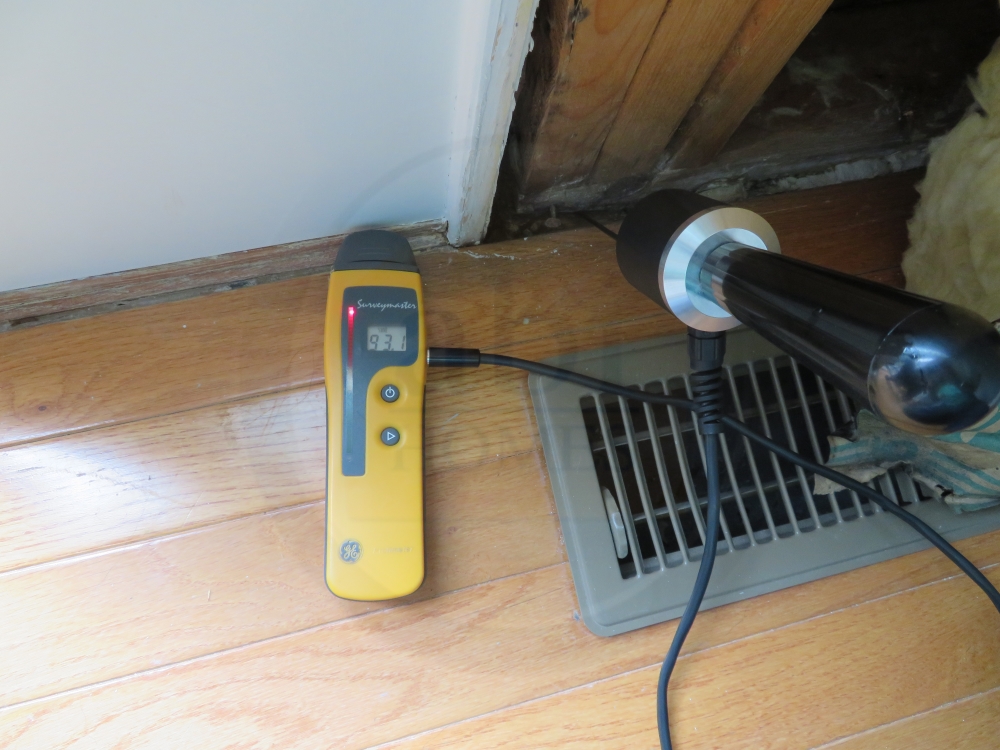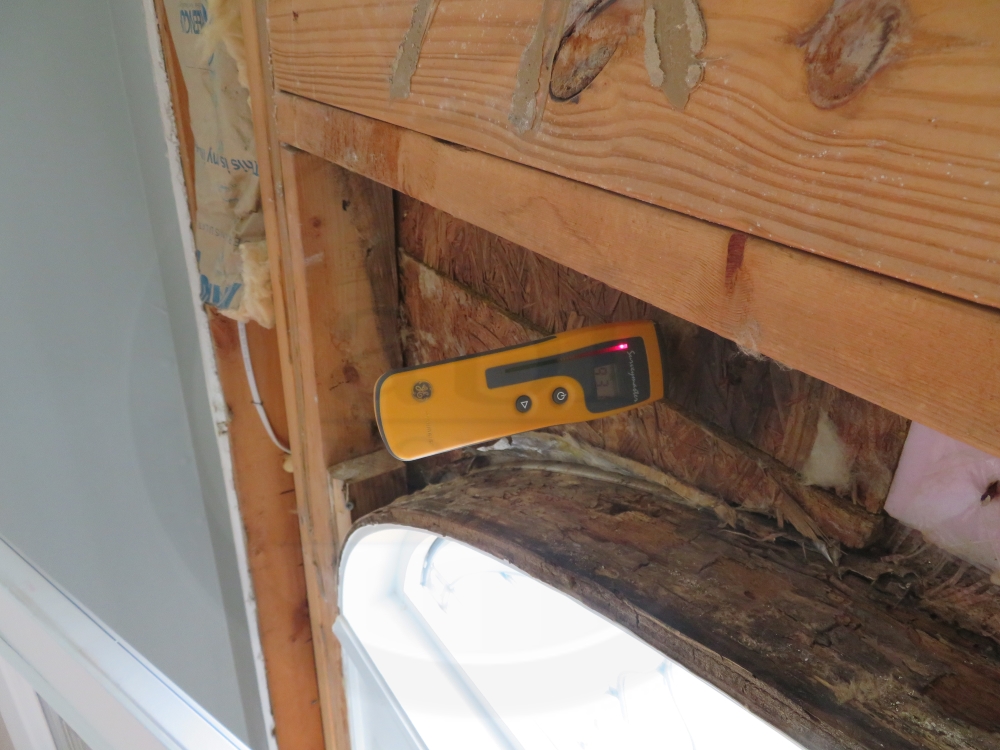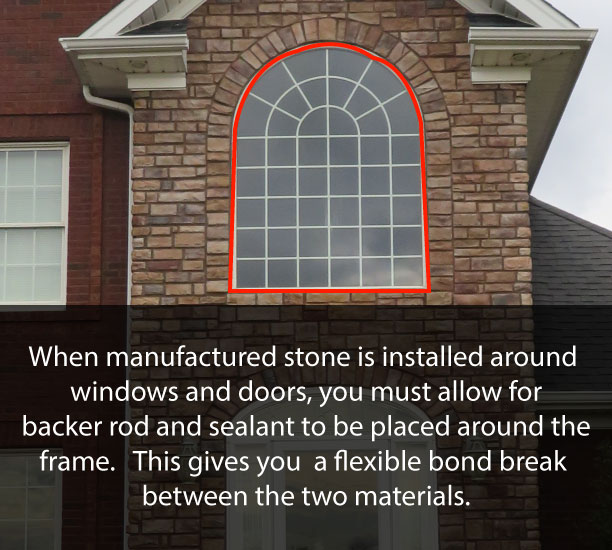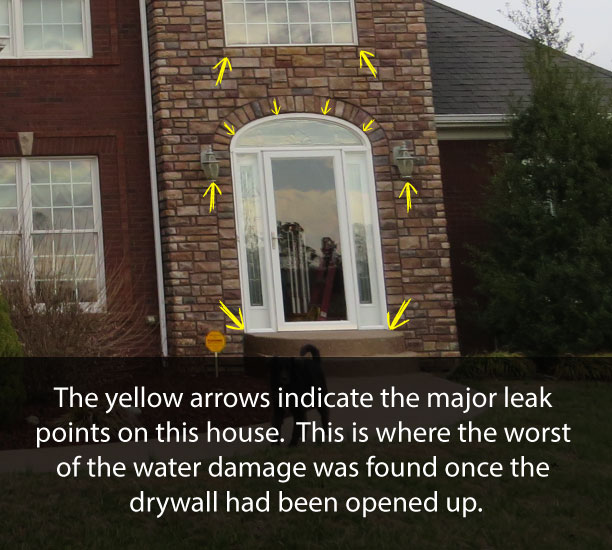Manufactured Stone Veneer Siding Failure
MANUFACTURED STONE VENEER PROBLEMS
What is the elevator pitch on why homes with faux stone siding, or manufactured stone, or fake stone, or whatever you want to call it are failing at a scary rate?
It’s pretty simple really. The stone siding is made of molded concrete. Concrete is porous and soaks up water. Wind-driven rain gets in between all the little cracks and before long you get lots of water behind your faux stone siding. The water gets in, but can’t get out. The trapped moisture then eats away on your home’s walls like cancer.
Without proper drainage to give the water a place to go, it’s a recipe for disaster.
It’s really that simple. I inspect homes on a weekly basis with fake stone siding and have never seen an install that was correct. Not one. It’s on starter homes, large mansions, and everything in between.
And if you have this faux stone on your house, it is very likely just a matter of time before you have a failure as well. And it’s not an easy–or cheap–fix.
REAL-WORLD FAILURE OF MANUFACTURED STONE SIDING.
I was called out to this house after the owners had discovered that their dream that home had turned into a nightmare.
Beth and Sam (names have been changed for obvious reasons) had started to paint their front foyer, and Beth said she could smell something musty. Sam started to poke around the wall at the front door and noticed a bit of damage around the base of that wall.
He dug a bit deeper into the situation and started to find moisture damage around the base of the door on the inside around the drywall.
Sam’s first cut into the drywall was only about 2 feet off the floor. “I wasn’t sure where the water was getting in,” he said. “I thought it was rain blowing in around the base of the door. I called a buddy of mine who is a contractor and had him take a look at the water damage. He told me to caulk around the door and close it back up.
I didn’t know exactly what to do, but I knew that wasn’t the right thing to do.”
Thank goodness Sam didn’t listen to his friend. You can see from the image below that while the water stains don’t look terrible here, things just below the surface were very wet. Even after a few weeks of being opened up to fresh air and having a fan blow on them, the wet wood around the door and floor was scanning around 90% relative moisture. That is completely saturated, more or less.

After seeing the damage along the base of the walls on each side of the front door, Sam and Beth decided they had better keep cutting until they found the end of the water damage. Little did they know how deep that rabbit hole was going to get.
“Once I reached the top of the front door I knew we were in deep trouble. This was way more than just a leaking door.” Sam said.
Beth chimed in, “The wood around the top of the door was like mulch. With every little bit we pulled out my heart sank a little more.
The insulation in the wall was like a wet towel fresh out of the washing machine, dripping with water… I ended up just getting the shop vac and sucking out my wall.
Can you believe that? I shop vac’d MY WALL out of my 12-year-old home.”

MORE DAMAGE FROM FAILED MANUFACTURED STONE SIDING
The water damage near the front door was all the way around. From top to bottom, it was rotten. You can see from the pictures below the wood rot was not just at the base of the door.
What this tells you is that the problem is coming from above, and the moisture is running down the wall.
This seems to be the trend with leaking manufactured stone siding. The large open walls do OK for the most part. It is around the doors, windows, and the base of walls that I see the most problems.
Like everything thing in life, the devil is in the details. And I have yet to see a home with manufactured stone that has those details correct.
THE WHOLE WALL CAN’T BE ROTTEN, CAN IT?
Beth and Sam kept cutting out drywall. Trash bag after trash bag, they packed the front wall of their house out to the curb until they reached the bottom of the large window above the front door.
“This is where the wood got really wet, soft, and moldy. We could tell this was definitely a spot where the water was getting in.”
They were correct. This is one of the spots that the failure was stemming from. The “installer” (and I use that term lightly) did not attempt to flash anything around the door or window.
They butted the manufactured stone next to the vinyl frame. It was doomed to fail from day one.
These fine people and their dream home never had a fighting chance.

“Once I saw how bad things were, I called my builder and asked him for guidance,” said Sam. “He told me to call the call guy who installed it, as he had never seen anything like this before.
So I did. I didn’t let on to what was happening, I simply asked if they were doing anything different with installation methods now versus 12 years ago.” said Sam.
“Nope. Still doing the same way we always have,” the installer said. “We’re up to several hundred houses a year now. Manufactured stone is very popular, and we’re busy as ever!”
“After I hung up with him I couldn’t help but be sad for the thousands of people who very likely have the same problem as I do, but just don’t know it yet.”
“I started doing my own research on what had gone wrong and came across your ACMV Problems Series,” Sam said.
After reading that, it made perfect sense to me what the problem is. So I reached out to you for some help, and here we are. Stuck, not knowing where to go from here.”
Should your home inspector catch this problem?
All of this brings us to today. Sam and Beth are in deep doo-doo, with a very expensive problem to deal with.
I asked them if they had gotten a home inspection before they closed on their new home, and they said no. (This is not surprising; lots of people don’t get a home inspection on new construction- they think it’s a waste of money.)
Not that it would have mattered much this time. No one was reporting on botched manufactured stone installs 12 years ago–we just didn’t know it was going to be the monster of a problem that is it now.
In fact, there are lots of home inspectors currently who still don’t know anything about these issues, and don’t report them to their home buyers. I get a couple of calls a month from people who find my blog and are wanting answers about why their guy “didn’t say anything about all this.”
I don’t know.
You will have to ask your inspector about that.
The boilerplate answer I hear in the home inspection world is that problems like this one are beyond home inspection items, as they’re not visible on the surface (technically a home inspection is a non-invasive look at the house).
You see, a lot of home inspectors hide behind that excuse to keep the heat off of them, and keep their job quick and easy.
Personally, I think that is chicken-$#!@ and doesn’t do anyone any good.
Issues with manufactured stone are widespread, and the sooner everyone involved learns about and deals with the problem at hand, the better off we’ll all be.
As for now, Beth and Sam are exploring options on what happens next. I hope to stay in the loop and bring you a happier story of restoration and repair when that time comes. Stay tuned for an update!









Thanks for the great info on here…I stumbled upon your blog and glad I did.
We live in the northern panhandle of WV and have and old 1930s home that has some type of permastone on 2 sides (the old pink & tan large stone type and vinyl siding on other 2 sides that I figure they replaced at some point over the years).
A couple years ago we noticed an ant problem in the window seal of the bedroom – we ended up ripping out the seal and surrounding drywall to find mushy rotten wood… my husband and his dad (who has a bunch or rentals so they are pretty handy) replaced all the wood, seal and drywall.
No further issues with ants but I have noticed the exterior on that side of the house gets “wet” every time it rains compared to the other stone section of the house…we plan a new roof this year so we are going to see if anything is going on up above, but your info on the space needed at the bottom makes sense to me now because it looks like it wicks up (it never reaches the roofline) and I have a flower bed on that side as well as in the front, but like I said, we don’t see it in the font – yet!
We have newer vinyl tilt in windows so it wasn’t a window problem as originally thought…and they caulked the heck out of the window inside and out when they did the work last year. We will def look into what we need to do around the foundation to allow moisture to drain out. Thanks again for such an informative site!
Thanks for the great info on here…I stumbled upon your blog and glad I did.
We live in the northern panhandle of WV and have and old 1930s home that has some type of permastone on 2 sides (the old pink & tan large stone type and vinyl siding on other 2 sides that I figure they replaced at some point over the years).
A couple years ago we noticed an ant problem in the window seal of the bedroom – we ended up ripping out the seal and surrounding drywall to find mushy rotten wood… my husband and his dad (who has a bunch or rentals so they are pretty handy) replaced all the wood, seal and drywall.
No further issues with ants but I have noticed the exterior on that side of the house gets “wet” every time it rains compared to the other stone section of the house…we plan a new roof this year so we are going to see if anything is going on up above, but your info on the space needed at the bottom makes sense to me now because it looks like it wicks up (it never reaches the roofline) and I have a flower bed on that side as well as in the front, but like I said, we don’t see it in the font – yet!
We have newer vinyl tilt in windows so it wasn’t a window problem as originally thought…and they caulked the heck out of the window inside and out when they did the work last year. We will def look into what we need to do around the foundation to allow moisture to drain out. Thanks again for such an informative site!
Hi Kim – I’ll shoot you an email. Thanks.
So we would like to install faux stone on our mountain house. Is there a correct way to install it or is it doomed to fail no matter what?
If a proper rain screen is used in the installation and everything is detailed correctly you will be fine. However, most contractors will do it correctly so be sure you demand that they follow the MSV guide to the letter or you will likely have trouble down the road.
Do real stone veneers also suffer from these moisture problems, or is stone non-porous enough to slow the water intrusion? Example, Statesville Square stone.
They certainly can have the same problems. Any thin veneer adhered to the wall has the risk of trapping moisture and causing the home to rot. The devil is in the details. All of these failures are a man-made problem; if people screw up the installation, the house will leak/rot.